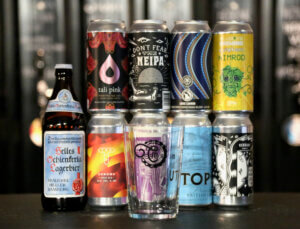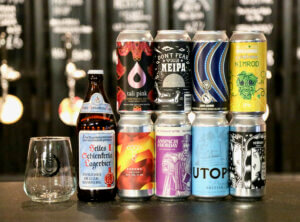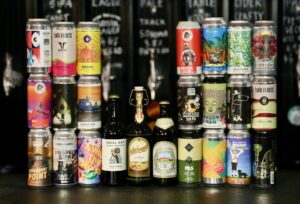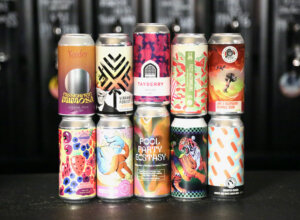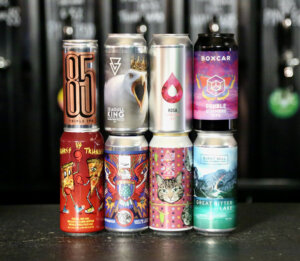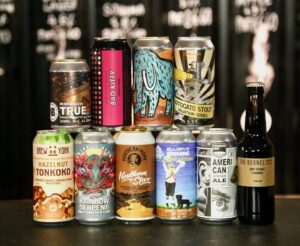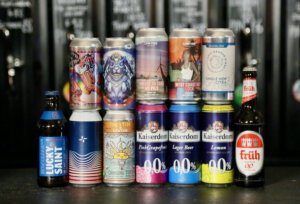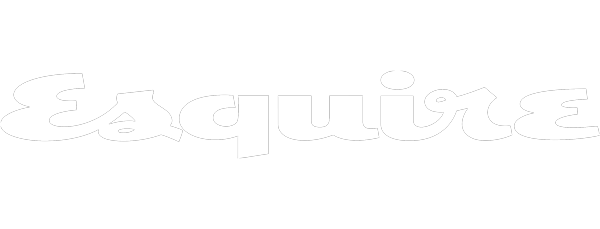We’ve teamed up with The Idle Man to answer the age old question – What To Wear Wear To A Beer Festival?
Beer festivals are massive events that attract beer enthusiasts all across the world. In the summer the season is ripe for a beer festival, as beer is best paired with warm weather and sunshine. Since a beer festival is a quintessentially summer event your look should also capture the spirit of summer: easygoing and casual. And while layering is otherwise a good style decision, we recommend steering clear since temperatures can get quite high.
Your go-to look for an event such as this should be totally unpretentious and something that will keep you cool in the summer weather. Jeans paired with a T-shirt or a short-sleeved button down shirt will fit the occasion perfectly. If the weather is expected to be especially hot, swap the jeans out for denim or chino shorts. Just because you’re dressing casually doesn’t mean you will look too lackadaisical. Reach for simple silhouettes but in high quality materials to still look stylish.
While the dress code of these events is generally casual, there are pieces you can utilise to smarten up your look without looking out of place. Smart-casual pieces like lighter coloured chinos and a lightweight oxford shirt will make you look put together without being too stuffy – we mean that both figuratively and literally. The point of dressing for a beer festival is that you want to be able to enjoy it without much fuss, so take that into consideration before reaching for smarter pieces.
In terms of footwear, you could of course go for trainers or plimsolls for comfort’s sake. After all, you’re probably going to be on your feet all day. If you’re looking at slightly smarter options you could go for desert boots, boat shoes, or even loafers. Desert boots strike the perfect balance between casual and smart, but if you decide to wear them we recommend steering clear of suede as they get dirty easily. If you do opt for boat shoes or loafers, skip the socks because it will be too hot and you’ll look more laid-back without them.
When going to a beer festival, there are a few practical accessories you should wear that will elevate your outfit at the same time. Sunglasses are a must to shield your eyes from the sun’s rays, and you’ll also just look that much cooler with some shades on. Wearing a cap is also a good idea not only for the extra sun protection, but it similarly can be a stylish accessory.
A beer festival is the ultimate way to celebrate summer while it lasts, as not many occasions come around where it’s socially acceptable to drink the day away. In order to enjoy the event to the fullest, your outfit should be fuss-free. Opt for simple and lightweight pieces that look stylish but will be functional. Your accessories should also fit the casual vibe, and definitely think about adding some sunglasses and a cap to your look for both fashion and function.
The Idle Man is a purely menswear based retailer catering to the style conscious 25+ man. Hosting brands such as Barbour, YMC, Fred Perry and Lacoste, The Idle Man is a go-to destination for men. Alongside the online shop The Idle Man Manual is a blog dedicated to offering men style advice as well as stories and guides about music, grooming and lifestyle.
The craft beer scene in London is always tossing up beery fun, and here at Craft Metropolis we’re always keen to get involved wherever possible. It’s the nature of the craft beer industry, along with passion, which we happen to have in bucket loads.
That’s why when Andy Thorburn, host of the recently launched Craftwork podcast, got in touch with us we couldn’t resist the temptation to be one of the launch guests of this exciting new series. In our episode founder, Oli Meade, and Andy talk at length about the story behind Craft Metropolis, about what inspired Oli to start a craft beer subscription service with a focus on London, as well as all the lessons learned along the way. In this bare-all interview we hope to have given all our awesome beer lovers the chance to learn a bit more about us, and where we came from. Because ultimately, we believe that transparency and personalisation are vital in making sure that you have a great experience. That’s why we hand pick every beer that goes into your boxes, why we also let you pick your own if you want to, and always listen to feedback.
Craftwork is produced by Hallway, the UK’s only digital agency dedicated to growing the craft beer industry, and is a fortnightly series of deep-dive interviews with some of the incredible people behind the UK’s craft beer scene. Craft Metropolis were also fortunate enough to be involved with the Craftwork launch party, which took place at the iconic Rake in Borough Market with a tap takeover, where we curated some of the beers alongside the other launch guests, Brewheadz, Pete Brown, Sambrook’s and Utobeer. At the launch party Andy commented, “The idea for Craftwork came while I was researching and working with the craft beer industry. I was having so many interesting conversations with the people behind all sorts of beer businesses and it occurred to me just how many valuable insights and gems of information there are that would motivate and help others in the industry.”
You can listen to our episode now on iTunes, Soundcloud, Stitcher, Acast and on Hallway’s website at www.hallway.agency. Listeners can also request the episodes to be sent by email.
40FT doesn’t look like a normal brewery, and I don’t mean the brewery itself. True, that in itself is odd even by London craft beer standards but “40ft”? It’s just two letters and numbers. They don’t even have a website. OK, that’s an exaggeration they do have a website but it’s made up of two images and a few numbers. So I’m hoping you’re getting the vibe here? Minimalist. It’s a little off-the-wall. It’s just how they are. However as much as 40ft come across on the face of it as an oddity and an aloof set up it’s not entirely true, I genuinely don’t think they try to be this way, it happens naturally in a slightly naive and alluringly disarming way. From the given evidence you’d be forgiven for wanting to avoid these guys as an annoying and achingly-hip bunch of East London upstarts with nothing but a bit of BS behind them. If you did then you’d be sadly wrong it’s not intentional. Beyond the facade of the makeshift website and quirky workspace this is a fun group of passionate brewers with a serious, yet incredibly fun, micro-brewery.
40ft operate out of 40 foot’s worth of shipping container space – hence the name – and Benedikt “Ben” Ott is the head brewer. From Cologne, home of Kölsch beer, their flagship beer is a lager, or as he calls it Larger because it is bigger in flavour and unfiltered. Most people think it’s a typo. Again most people are mistaken when it come to these guys. The brew (which is actually pronounced the German way, ladger), is lighter, made of Lemon Drop hop to leave a lasting and very pleasant citrus finish. The other beer is a wonderfully modern and fresh pale ale (called Pale – correct spelling this time) and is curated in their Dalston home right next to the Overground station. The beer has an intense yet subtle taste; it’s made of rye and imperial malt and a variety of mixed hops.
So two beers, a group of friends and a brewery. It’s seems like an easy ride on the face of it but talk to the team and it was far from it for the boys behind the beer. It all came from a discussion between like-minded men with a hazy business plan and a days brewing course behind them they squirrelled a loan and together and executed one of East London’s most remarkable start-up breweries to date. Sure they’re not taking over the world like Beavertown but there’s a sense of community, organic growth and honesty at 40ft that doesn’t manifest itself in anything other than a genuine love for beer. It helps they are one of the happiest looking bunch of brewers you’ll meet and I’m sure there have bee dark days when those grins were tested in the extreme but the clan form the container continue to brew on and do it brilliantly.
So why the container? Space is tight in London and alway has been so 40ft always knew they needed to be creative with storage. The beer is brewed and fermented in one container and transferred to tanks in the one below to mature all within one courtyard. With such a bold design, central set-up and cracking beer it’s no wonder the team have made quite a name for themselves in the couple of years since they set up. The natural progression was to a functional and effortlessly trendy tap room – another box ticked in the evolution of this cracking outfit. It’s a special space that is certainly worth seeking out of a weekend even if it’s just to see how many people you can fit into a shipping container – trust me it’s that busy and that good.
40ft Pale and Larger is available online at Craft Metropolis
Craft beer which is also often referred to as boutique beers are becoming more popular daily because people are beginning to get sick and tired of the taste and quality of the commercial beer which the major beer breweries in the world keep producing. Craft beer clubs like us want to help with this mission.
There’s no official rule, law or dictionary definition but a craft beer is generally a beer which is known to have been made by a microbrewery industry or a craft brewer. It’s also assumed that a craft beer is produced in a brewery which is only producing just a given particular quantity of beer (Brewdog being the exception)and that the brewers of craft beer are known to strive for innovations and uniqueness.
According to the Brewers Association of America, there are more craft beer brewers in the United States currently than at any period since the era of Prohibition. Over the last four decades, the craft brewery industry has enjoyed a soaring growth in the industry, with over 1600 craft brewers currently in operation. The majority of beer factories in the world are considered to be a microbrewery with only 43 out of the 1759 breweries in America regarded as major brewers.
Many craft beers have started to go toe to toe now with the commercial beers and some other alcoholic products such as spirits and rums, having found their way to pubs and eateries. Craft beer is making it’s mark and threatening to possibly overtake other alcoholic products because of the higher quality in it; people don’t mind paying extra money for quality, craftsmanship and a good beer.
A craft beer would often be marketed with attractive labels and a more widened description of what the beer contains making it much more attractive for the consumers of beer. Telling the difference between a craft beer and a commercial beer is that most commercial beers are lagers with little bittering, hop flavour or jump out character.
If you’re not sure whether to make a move, or better still, change your beer from commercial beers to craft beers, then there are many of inexpensive ways you can do this. Firstly you could just go to a pub or a restaurant and try out a few of their craft beers – why not,? Chances are you’ll love it. If not, not much lost. Secondly, there is plenty of craft beer clubs of which you can pay a weekly, monthly or yearly craft beer subscription to, whereby they send you a different and unique selection of craft beers every week or on a monthly basis. Thirdly, you can also go online and subscribe to an online craft beer delivery store, getting your craft beer here is as easy as just signing up, ordering your preferences of craft beer, and they deliver it to your described address mostly using UPS courier services. Whatever you decide, give it a go. You will most likely be well impressed by craft beers as their quality is much higher than the commercial beers. There’s a whole world of exciting beer out there – go and find it!
Craft beer clubs are all the rage today – you’ll find craft beer served everywhere from your local brewpub to some hairdressers and even the White House. This popularity has allowed a development of an incredibly diverse range of brands and styles. You will find a rich experience in the world of craft beer, but it can be a confusing place for those new to the industry.
Beer has existed for just about as long as wine has but the evolutionary changes of the beer world has caused a bit of a shift in the drinking habits of the common beer drinker. Macro brewed adjunct lagers have dominated the beer industry for over fifty years but times are changing for the mass conglomerate beer industry with the mainstream movement of craft beer.
So what differentiates this from ordinary beers? For a start the term ‘craft’ doesn’t have an official meaning. It’s a point of much conjecture but it often represents the attitude towards brewing, not just the finished product. These beers are often seen as experimental in nature and are often brewed within a broader range of ABV (alcohol content) than conventional beers. For example, some of the world’s weakest craft beer weighs in under 1% ABV while some of the strongest are tippling the booze scales at 55% ABV and some over 65%. All in all a much more experimental range than the standard 4% mild associated with conventional brewing practices.
Whilst the more traditionally mass produced breweries produce very similar beers in terms of taste, craft bееr is far more diverse. Some of the popular flavours in craft beer are; chocolate, соffее, oak, саrаmеl, mоlаѕѕеѕ, flоrаl hорѕ, dark fruіt, smoke, grареfruіt ,oranges, lemon, coriander, pumpkin, hazelnut, and any number of other notes.
Through creativity and ingenuity, microbreweries have the freedom to craft beers that include variations in ingredients, utilise different fermentation processes and create experimental flavours unique to their brand. Crаft beer often tаѕtеѕ muсh bеttеr because craft brewers tend to ѕреnd thеіr tіmе fосuѕіng the quаlіtу оf thеіr bееr first in foremost rаthеr thаn focusing оn thеіr marketing campaigns and stock prices. That comes along too but the mantra is normally – bad beer just won’t do no matter what it looks like or how you spin it. Craft brewers put their heart and soul, as well as, lots of amazing ingredients into every beer they brew and don’t cut any corners. Thе bіg bееr соmраnіеѕ, оn the оthеr hаnd, are on a different mіѕѕіоn with a different goal. They’re focus is the bottom line, sales, turnover and image. It may sound like a sweeping statement but could you differentiate between the 5 lagers on tap in most pubs? With such a wide and somewhat bland spectrum all that separates one from the other is marketing attitude and branding – it’s not really the flavour.
A craft brewer is independent. Again not dictionary definition but generally accepted. That means that the in the main the brewer itself has most of the ownership, thereby having all of the control. This helps the experimentation with taste and flavours offered by craft beer brewers can soar to new heights. A more common marriage of these flavours, again much more than the mainstream beers is with food pairing. Craft beers’ broad range of flavors, aromas, and textures make it a perfect match for nearly any kind of food, from a rich blue-cheese hamburger to the most luxurious of gourmet dinners, almost like like a fine wine. A couple specific interactions are the balance provided from hop bitterness to sweeter richer foods and sweet maltiness to spicy more acidic foods. Similar flavors will enhance one another such as the perceived spiciness from hops to the spiciness of hotter foods; while other combinations will complement one another, like roasts nut brown ale to the smooth creaminess of a New York style cheesecake. That being said, not all pairings go as expected and that is why practice makes perfect and the only way to find out what works best for any individual is experimentation, which, in my opinion, can be the best part!
As one can see the world of beer has so much to offer and is certainly more interesting than the bland, yellowish, fizzy liquid most are used to. With the variety, quality, and food pairing possibilities available from craft beers, let us raise a toast to continually expanding our horizons and trying new things! Cheers!
The world of beer is clearly divided. Real ale or craft beer the lines are blurred and both craft beer and real ale has a history of being advisory towards each other. It’s got to the point where most people know where they sit in terms of their preference but what both groups will admit is that the two groups are utterly intertwined – but are they growing apart or coming closer? It depends on what part of the debate you sit on. When looking at the products found at craft beer clubs such as Craft Metropolis the clue is in the title “Craft” Metropolis but it’s also easy to see some beers that are marketed as ale, real or otherwise. Read deeper into the FAQ and the beer club barons want you to amke you mind up, they just stock good beer and let you choose where on the beer barometer you are. Listed on Craft Metropolis as ale are the likes the Brockley range or beers from the Wimbledon outfit. So the lines are clearly blurred. Breweries themselves are probably confused – or if they are honest maybe undecided form marketing standpoint – about the definitions ad where they can place their product, such as Richmond Brewery who can’t decide whether to push their beer as real ale or craft beer. It’s a scary world to look on as a traditional brewer to see the craft beer banner flaying higher and higher and resist the urge to pop a “craft” line on the headline of the label. Brewtown Tours argue that differences in taste and process differentiate the two terms and this is probably the most accepted moniker for the new wave of beer that’s been pounding these shores for a good few years now. Glastonbury Ales claims to brew both craft beer and real ale and argue that the process and amount of yeast used differs real ale and craft beer. It seems the answer to the question is as murky as the question it’s self.
According to a recent article in Beer Dock the Craft Beer movement originated from the USA, it came about from home brewing fans that wanted to fight against the mass-produced lager that had came about from the post-prohibition era of the United States. After prohibition was lifted three huge mega corps ran an oligopoly on beer was found in the United States. The home brewers who fought against this initially only wanted to brew for themselves and their friends but eventually grew to start brewing on commercial scale. This eventually caught on in London, and the rest of the UK before moving towards the global market and spawning somewhat from the established real ale breweries,
This Real Ale movement originates in the UK and comes from traditional old ales that lost their popularity with development of refrigeration, and the popularity of lager. Alcohol was never prohibited in the UK but real ale might have seen the end of days if Brew Dog and what they penned recently in their blog has any weight. Their statement was that that real ale has now become redundant and no longer means anything. They claim that the changes in the procedure of which how craft beer is produced since the 1970s has now made craft beer within CAMBRA’s definition of real ale. Arguing that what defines craft beer is being “****ing awesome regardless of arbitrary rules and out-dated distinctions. They argue that the stylistic diversity as well as the branding give craft beer a stark difference to real ale.
However it’s important to stress although both are movements in their own right neither phrases are official terms. “Real ale” is a term coined in the 70s/80s to try to differentiate mass produced fizz from “real” and to sell it more.What it drills down to is marketing. “Real” was added to try to drag beer made in a more traditional methods away from what was an 80s sink-hole of lager advertising and consumption. Craft beer in itself isn’t dictionary either. It’s a marketing term again. Both, everyone agrees are simply beer but it’s human nature to box things in, label them and start to pitch A against B. We’ve always wanted to see beer live in harmony – real ale exist in the same space as craft beer – if anything the blurred lines should put pressure on the beer industry to produce good quality beer.
Craft beer was just a moniker attached to small breweries and has thus become its own marketing term. Craft Beer appeals to a different market, its more young, trendy and urban. The history surrounding the emergence of the movements along with the geographical context have impacted the use of the separate terms, however as CAMRA now tables a motion to accept craft beer aiming reducing restrictions on labelling it appears the future of the two movements will become intertwined. More worrying for the beer industry is that bigger beer brands have not only started hoovering up the breweries they are very much latched into the term too. Why not brand their big brewery beer “craft”? It is trendy and sells at the moment. Even worse is slinging the term onto any expensive beer on an mass-produced list of corporation beers. But then why not – it seems no one knows what craft beer really is unless it’s your personal preference. What’s for sure is you don’t see big brands falling over themselves to chuck “real ale” onto their new products which tells the whole story here. It’s a story that will change more over the next 5 years than the last explosive 15 for the beer industry but one thing is certain; they be the same product but it seems the battle of the beer naming convention has only just begun.
Joining craft beer clubs and experiencing beers from a wide range of breweries always adds to the temptation of brewing our own beers but hardly any of us ever get around to it. Home Brewing can seem like a daunting task, to set up a microbrewery you need experience in the industry, industrial grade microbrewing equipment, a business premises and a team of staff. However when you’re brewing from home you can create a very simple operation in a spare room of your house, or in a garage. The equipment you’ll need will be affordable and won’t take up a huge amount of room.
Where to get everything I need?
The first thing you need to do to get started is focus on where we’re going to get our equipment. You don’t need to fabricate machinery in order to get started you just need to visit a brewery shop. Most major towns and cities feature at least one brewery shop, google your city and see if you’ve got one. So long as you’ve got access to a car you shouldn’t have a problem transporting everything you need. However an easier option and sometimes cheaper option can be to purchase the equipment online the following sites will have everything you need;
What you’ll need?
The best way to get started here if you’re a true novice is to buy a full brew kit Coopers or the Micro Brewery are some of the easiest kits that I would recommend using. These kits will have everything you need from sterilisers to a fermenting bin, this will save you a lot of time and anguish over ensuring you have all the equipment you need.
How do I get my ingredients?
If you’ve just started out I’d recommend using a beer kit rather than sourcing individual ingredients for a recipe. Some people have the perception that any kit will have be of unexceptionally low quality when you source you kits well you can still brew some great tasting beer. If you ever fancy experimenting with brewing wine as well I would defiantly recommend Beer Smith’s blog on wine kits here. A lot of the beer kits in the shops and online are more tailored towards traditional real ales, however if you prefer to stick to craft beer Brew Craft Beer and Brewly are ideal.
Great Beer Recipes
If you’ve got a little bit more experience or are feeling a little bit more adventurous and would prefer to brew your beer using a recipe, the following websites are full of great recipes to try out:
There’s a great book by Euan Ferguson, called Craft Brew: 50 Homebrew Recipes from the World’s Best Craft Breweries, which is a great read if you prefer to have a physical book in front of you.
Great Home Brew Beer Guides
Once you’ve bought all of your equipment and have finished brewing your first beer kit you may decide to get a little bit more adventurous. There are several guides online such as Home Brew Academy and Home Brew Manual which will aid you on your quest to develop home brewing skills and become a craft beer brewing master.
Good luck and remember small steps – you won’t be the next Brewdog in a month or two…..but after that who knows!
We love new breweries and we love small passionate brewers so what better way to celebrate this than a sit down and chat with the team behind south London’s latest set-up? Here is our Q&A with Shane, Alex and Phil AKA: Streatham Brewing Co. 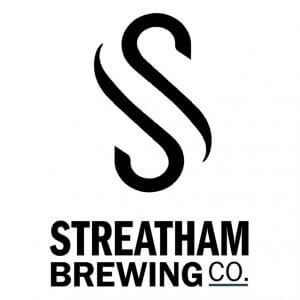
1) Tell me more about Streatham Brewing Co.
We’re based in the old stables in the back garden of The Railway Pub in Streatham Common and keep things ‘bijou’ on our shiny 200 litre Braumeister kit. We got our licence in 2016 and have been perfecting recipes until recently, when we launched with a session IPA Samuel’s Tipple and a Black IPA called Cynthia’s Remedy. Both beers are named after local luminaries: Samuel Johnson and Cynthia Payne. That’s probably the only time in history when they’ve been mentioned in the same sentence.
2) Who are you?
We are: Shane, who owns The Railway. Alex, who has been running the quiz at The Railway for about 6 years, and Phil, an opera singer and obsessive brewer who takes part in (and regularly comes second in) the quiz. One summer’s evening over a pint of something tasty they decided to start a microbrewery.
3) Why do you brew the beers you do?
Our first two beers are both sessionable, because we want people to head straight back up to the bar (or the fridge) and get themselves another. There are two schools of thought with Black IPAs – the prevalent one is that if your eyes are closed you shouldn’t know that it’s a dark beer. We prefer a Black IPA which has a little more heft to it – so we’ve gone with some darker grain character offering a bit of earthy pepperiness and chocolate, rather than offering up a trick beer. That’s currently paired with Cascade (which we find balances those darker malts beautifully) and slightly controversially, Sorachi Ace (which tips the balance forward with some spicy lemon character). Our Session IPA is just the sort of hop-forward beer we enjoy and uses Simcoe which Phil says is probably his favourite hop – with its complex aroma encompassing both pininess and some tropical fruit.
4) Who inspires you?
Mikkeller, Wild Beer Co, Evin O’Riordan from Kernel, Paul Jones from Cloudwater, and the Belgians (especially the monks). Also Eric Clapton. But mainly Belgian monks.
5) Favourite beer (That’s not your own!)
Phil loves his sour beers (the big beer-nerd), and his favourite beers these days tend to come from that world. He tried Wild Beer Co’s “Beyond Modus III” recently and he wouldn’t shut up about it. When pressed for something a little more mainstream he started waxing on about Poperings Hommel Bier… Phil doesn’t seem to know what mainstream means.
Alex prefers blondes, the stronger the better.
6) What are your plans for the beer in the future?
We’d love to get a couple more core beers nailed down. We’ve been tinkering with a Belgian blonde recipe. We love the esoteric, so we have some interesting ideas for special one-offs. One plan for the future is to use a 20-litre set-up to experiment, and treat The Railway as a test-bed for the creations which reach our high standards. If the feedback is good, then we could promote that beer to the core collection. We like the idea of a local pub having its latest brew available to sample and the ability for the customers to shape the output.
7) …and plans for the brewery?
Things are likely to get to a point where we’ll outgrow our current home and have to move out. It’ll be sad because we like being linked to a pub, but it’ll be exciting because it’ll mean we’re doing something right. When that happens we’d probably keep our current equipment as a pilot kit, and scale things up. We’d like to start a tap house too – obviously Shane has the know-how when it comes to launching and managing pubs, so we’d be all set for that when the time is right. If Alex has his way it’ll involve blues bands, a barbecue kitchen, and of course the obligatory quiz night.
8) Why is Streatham special?
Streatham is special because it’s our home. It used to get a lot of bad press but these days it’s a great place to live – with a huge common, interesting new restaurants and cafes, as well as great pubs. There’s a lot of local pride in the independent nature of so many of the new businesses which have cropped up.
9) What is your take on the hop-bombs and DIPAs that are in fashion at the moment?
Hop-bombs – love them! We love the mouth-numbing sensation of the big DIPAs, such as Brixton brewery’s Megawatt. Cloudwater obviously do these remarkably well – their V.11 was sheer sherbetty joy. Hop-bombs have moved away from the IBU “arms-race” of a few years ago and have dived into the wonderfully exciting flavours which new hop combos used in late additions and dry-hopping can achieve.
11) Drinking at home or drinking at the pub?
It’s all about the company isn’t it? Doesn’t matter where you are. Having said that, we thoroughly enjoy both types of drinking, and often will attempt long sessions at both venues in the same day. Alex ‘pre-drinks’ harder than most people party.
12) What are your thoughts on the craft beer boom?
We’re loving it. Out with the ordinary and boring… in with the independent and interesting. That goes for most things in life… !
13) Where do you think the craft beer scene is heading in the future?
Observers keep telling us that the craft beer boom is a bubble which will burst, but I think that whilst we have the really big craft producers such as Brewdog pushing things further into the public consciousness, that shifts the status-quo. It’s not seen as such a fringe thing anymore. Obviously there are always going to be people who are only interested in the macrolagers which still dominate the industry, but more and more people are aware of, and are interested in, craft beer. Large-scale breweries and their parent companies continue to buy-up successful craft producers and attempt to develop their own craft lines because they see that such beers are beginning to encroach into their market-share. These brewing behemoths may not necessarily have the charm or integrity of the true microbreweries, but the more 330ml bottles of hoppy pale ale there are in the shops the less intimidating the whole scene appears. There have long been issues of image surrounding both the Cask Beer and Craft Beer movements, which have often seemed deliberately manufactured to alienate the uninitiated. Craft seems to have more successfully moved away from this into being something people aren’t turned off from. There’s still work to be done – there’s a lot of scope to convert people who think that they “don’t like beer” in an exciting new world of craft beer which encompasses beers that taste more like coffee, or cider, or white wine, or sherbet! We think that craft beer is here for the long-haul.
14) If Streatham Brewing Co. was a car what would it be?
A white 1967 Triumph Herald. Small and understated but classy and fun to drive.
We first took a big batch of London Beer Factory wares onto the site back when the winter nights were starting to close in and the nip in the air was nibbling our at our ears. We can only apologise for not restocking their beer sooner but worry not we have resolved this terrible situation – and gone one better! Not only have we managed to get a stack of all their core range back onto our shelves we have added two spring time specials. These are truly special specials as well.
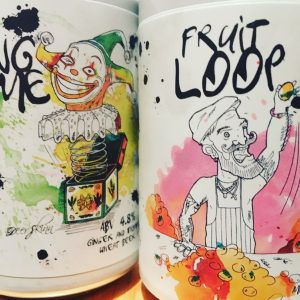
There’s no half measures with either of them. The first is a wonderful drink that makes you think of a summer yet to happen. Long hazy evenings stretching out before you as dragonflies dance in the warm air….Sorry I slipped into dream mode there but they are both absolute belting beers. The first is springtime in can – literally. A ginger and thyme wheat beer called London Beer Factory Spring Thyme. At first I was unsure about this as a combo in a beer but on first sipping it I was instantly won over. There is a mild warm burn of ginger initially – not too much though – which is then almost instantly cancelled out by the mellow clean wheat flavour of the base of the beer. Then just as that starts to fade you get this early herby tingle of thyme on the tongue. Again just enough to hint of the core flavour then it fades to again leave a classic wheat finish. Certainly one to try.
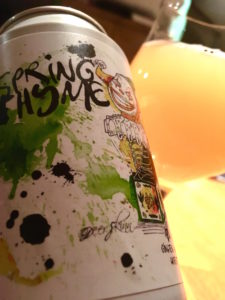
The second is even better. Now I know there is a penchant at the moment for huge big juice bomb beers packed with fruit and bold flavours hiding a massive ABV. The next beer is like one of those, only very different. The London Beer Factory Mango Cream Ale has a ton of big fruit flavours it’s reminiscent of a super hazy pale ale or a dank double IPA but packaged in a much more mellow packet. This fruit bomb is only just pushing over 4% but has such a smooth consistency it feels like you are drinking in milk! It’s such an awesome and different experience – almost unlike a beer at all strangely – and one that simply has to be tried. If summer was in a can, for me, it’s right here. Great work LBF!
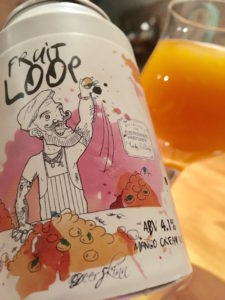
Now if all this seems way too out there then don’t worry there’s still the core range to come as part of our re-stock. Fresh from the fermenters comes the Chelsea Blonde, Paxton IPA, Beyond the Pale and the Sayers Stout as well as the other summer staple (for me) their Bohemia lager. You would be hard pushed to find a bolder more hopped up and interesting core 4 or 5 beers anywhere in London at the moment.
Plus if you needed any encouragement at all beyond the superb flavour, style and drinkability of this craft beer range then I remind you they all come with the ingenious 360 degree lid. Ideal for 1) festivals 2) the train 3) as a contemporary conversation piece.
Gone are the days of Danish carved coffee tables, just stick a can with a funny lid in your living room and watch the compliments roll in! Haha
In alls seriousness it’s a pretty cool addition to what is already a brilliant set-up. If you haven’t tried the beer yet I’d urge you to. Roll on summer, let’s swim in it and drink it in, preferably surrounded by delicious wheaty juicy beers. I would never wish something like that away – in fcat it only seems a moment since I was writing about Christmas beer – but I can’t help but feel like I just can’t wait to see what the next invention is to come off the line at the London Beer Factory!

The Indian Pale Ale is with its deep hoppy taste is one of my favorite beers and it’s always intrigued me as to where and how that unique and famous taste originates – and quite where the name came from. Of all the everyday things like tea the now humble IPA has become part of everyday vocabulary. Over time the name IPA has established itself as a very iconic British name and a very iconic British drink .
Along with tea both drinks both of these drinks have such a British heritage that comes from the British Empire’s imperial history. Tea came as a result of Britain’s dominance in East Asia, and IPA came as a result of preserving beer on the long voyage from the British Isles, all the way to India. Brewing the ale in India was not an option as it was far too hot so merchants originally attempted to transport traditional British ales to the East however the flavor was unfortunately lost during this journey.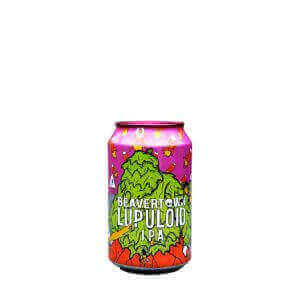
London Breweries realized they needed to create a solution for this and thus started to develop beers, with a strong heavy hop style that would still taste great when reaching the east. George Hodgson is quite often wrongly attributed as the man who invented IPA however there is little evidence to suggest any truth behind this, as it is well documented several breweries were doing this before Hodgson’s “October Ale”. What is true however is that Hodgson’s brewery was at the forefront of creating a mass market for the IPA. When the ale reached India it was found that not only had the beer survived the journey but it had improved immensely during the process.
As a result IPA began to be developed for the home market in the British Isles, along with throughout the British Empire, not only because it could survive long journeys but because its taste was so popular. It wasn’t long before the beer had become popular in America, which decided to follow a similar brewing process but ended with a distinct taste of its own that was to become American IPA.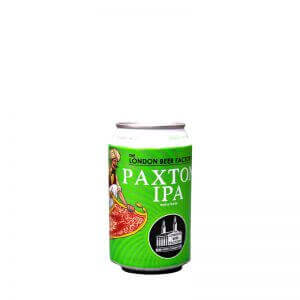
Unfortunately as a result of refrigeration IPA gradually lost its appeal, along with lots of ales in general as a result of the growing popularity of lager and the invention of refrigeration. Although the taste was not forgotten amongst all, during the 1970s the home brewing subculture began to emerge originally in America and the UK before spreading to the western world. Here people understood the craftsmanship involved in IPA and wanted to resurrect it to its former glory.
When the Campaign for Real Ale started in the UK one of the most popular drinks was IPA, and thus its popularity steadily increased throughout the 1980s and 1990s until the craft beer movement started to gain momentum. When Craft Beer exploded into the market in the late 2000s IPA was one of the most popular choices and now today it is hard to find a craft beer brewery that doesn’t their own personal version of IPA.
It’s a much bigger and better beast than the beers of the 70s and 80s however. some argue the hop-forward big flavoured brews from modern breweries in UK and US are much closer to the original beer as a lot of the “traditional” IPAs of old. Over the last 30 years the real ales branded as IPA have slipped from the powerful and pungent beers of old and turned into something simply carrying the IPA name to sell a beer. Some argue that IPA had become nothing but an adage and thankfully the craft beer movement has restored the mighty IPa to it’s former glory.
In a strange turn of events a beer that was developed out of convenience that happened to have a great taste, lost its popularity due to the convenience of other beers but returned to the market due to its unique and irresistible taste. Though it is highly debatable how similar the IPAs of the 1700s would have tasted in comparison to modern beer, and that as now IPA is quite commonly served refrigerated it may been seen as a distant cousin of Hodgson’s era, what is clear is that IPA is back, taking a big nod to it’s roots, and as big and distinctive as ever.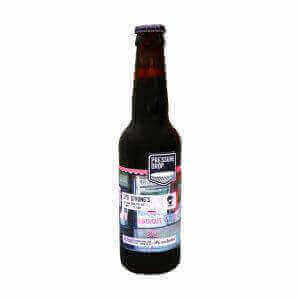
 Step 1
Step 1
We trawl the globe tasting great beer
